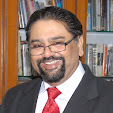 COMMUNICATE, CONNECT, CREATE CONFLUENCE
COMMUNICATE, CONNECT, CREATE CONFLUENCE
The modern executive is faced today with a
world of work which is spinning so fast that the chances of success depends on
the ability to make an immediate impact and lasting connections with the needs
and expectations of a knowledgeable and demanding customer.
Speed and Accuracy of performance coupled
with an ability to showcase skills and competences calls for making the most of
opportunities in the spotlight to capture the attention and influence people
who matter to make decisions that favour and support personal, professional and
organizational growth.
This translates to the simple yet somewhat
unpracticed ability to present oneself and one’s opinions and viewpoints with
fluency, courage of conviction, sound advocacy and aplomb!
At Valmar International we offer you the
choice of one or Two Day Programs held at our office location in Chembur and the
opportunity to connect with skills that allow you to make your presentations a
success.
The Program is an intensive analysis of
your current presentation skills and assists you develop professional skills by
identifying and filling in the gaps.
Being intensive in nature with individual
attention to each participant, the batch size is limited to TEN participants
with a minimum of EIGHT. We invite CORPORATES to nominate your executives and managers
to this program. We also invite anyone interested in Making An Impact through Powerful Presentations to enrol.
To really succeed at presenting
and build up effective
presentation skills, there are several key areas that one needs to become skilled
in.
Key Skill 1 : Planning your Presentation for Impact & Connect
Key Skill 2 : Using Yourself as a
Key Visual Aid effectively
Key Skill 3: Presenting with
Clear WI-FY “ What’s In it For You” rather than WI-FM “ What’s In It – For Me”
Key Skill 4 : Presenting with
Confidence, Composure and Influence
Key Skill 5 : Audience Centric Behaviour and Ability to Invite and Answer Questions competently
Key Skill 6 : The ability to
Influence people and create a powerful and collaborative presence
This
helps you leverage these crucial
Communication Competences

Managing
the
12 Cs of Presentations
|
1
|
CLARITY
|
Of
Thought
|
2
|
CRISPNESS
|
Of
the Presentation
|
3
|
COMMUNIC-“ACTION”
|
Of
Analysis done
|
4
|
CORRELATION
|
Of
Concepts / Models employed
|
5
|
CREATIVITY
|
In
the Presentation
|
6
|
CHOICE
|
Of
Medium
|
7
|
COMPOSITION
|
Presentation Design
|
8
|
CARE/CARING
|
Sensitivity
to Audience needs
|
9
|
CONCLUDING
|
Powerful,
Succinct and Memorable
|
10
|
CARRIAGE
|
Body
language of the Presenter
|
11
|
CONVICTION
|
Passion
of the Presenter
|
12
|
CONVINCING
|
Influencing
Power of the Presenter
|
The Training Consultancy
Valmar International is a Management Consultancy and as part of
our Vision to ASPIRE for Excellence, motivate and collaborate with others whom
we associate with, we offer several learning programs ranging from
communication skills, interpersonal skills, managerial skills, team building
skills, influencing skills right through to Managing Cultural Diversity through
Cross Cultural Sensitization, Global Business Etiquette and Leadership
skills.
At Valmar International we have Four Verticals
1. Competence Based Corporate Learning Solutions and Interventions
in Behavioural Sciences & Soft Skills stretched right across the spectrum
of competence based workshops. We design and deliver our own programs under our
banners "Steering Wheel of Life" and "The Winning Edge"
series of programs.
2. HR Research Solutions & Value Add Services ( HR Audits,
Climate Analysis, Exit Interviews etc ) - we are currently engaged by several
Indian Majors and MNCs in a and also have an overseas collaboration for other
worldwide clients
3. Coaching & Counseling – Dexter Valles, CEO is an
Internationally Certified Coach and we have a panel of qualified counselors at
our Learning & Counseling Centre in Mumbai
4. Youth Learning Solutions ( Our Learn2Lead Academy is focused on
delivering Life & Leadership Skills to the key stakeholders in the
development of the youth , viz Students-Parents-Teachers )
Registration for “Professional Impact” Presentations
Two Day Program
To register please email us
VALMAR INTERNATIONAL
602,
Rendezvous, Plot 464, 14th Road, Chembur Mumbai 400 071 , INDIA
Email : hrdsolutions@valmarinternational.com
website www.valmarinternational.com




